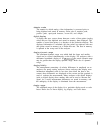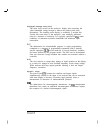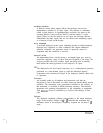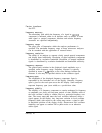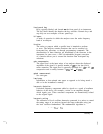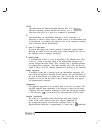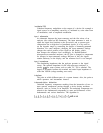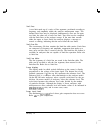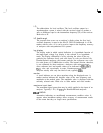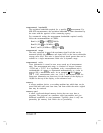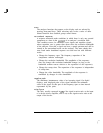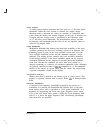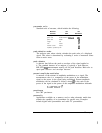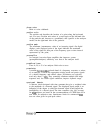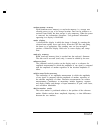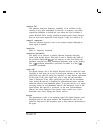
I
-
LO
The abbreviation for local oscillator. The local oscillator output in a
superheterodyne system is mixed with the received signal to produce a
sum or difference equal to the intermediate frequency (IF) of the receiver.
Refer also to IF.
LO feedthrough
The response that occurs on an analyzer’s display when the first local
oscillator frequency is equal to the first IF. The LO feedthrough is a 0 Hz
marker with no error, so it can be used to improve the frequency accuracy
of analyzers with nonsynthesized LO systems.
log display
The display mode in which vertical deflection is a logarithmic function of
the input-signal voltage. Log display is also referred to as logarithmic
mode. The display calibration is set by selecting the value of the top
graticule line (reference level), and scale factor in volts per division. On
Hewlett-Packard analyzers, the bottom graticule line represents zero volts
for scale factors of 10 dB/division or more. The bottom division, therefore,
is not calibrated for those analyzers. Analyzers with microprocessors
allow reference level and marker values to be indicated in
dBm,
dBmV,
dB/IV,
volts, and occasionally in watts. Nonmicroprocessor-based
analyzers usually offer only one kind of unit, typically
dBm.
marker
A visual indicator we can place anywhere along the displayed trace. A
marker readout indicates the absolute value of the trace frequency and
amplitude at the marked point. The amplitude value is displayed with the
currently selected units. Refer also to delta marker and noise marker.
maximum input level
The maximum signal power that may be safely applied to the input of an
analyzer. Typically 1 W (-30
dBm)
for Hewlett-Packard analyzers.
MEAS
UNCAL
Annotation indicating an uncalibrated measurement condition exists. It
appears when instrument settings affect accuracy of measurement results
to the extent that they no longer meet specifications.
Glossary- 15



